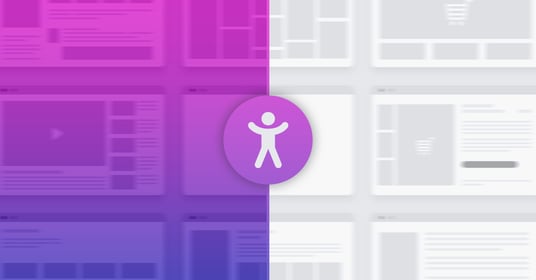Get a Free Trial
Creating, executing, and maintaining reliable tests has never been easier.
Quality engineering is a scalable, sustainable response to the two major demands facing software companies: delivering delightful customer experiences while also enabling rapid development. It combines high-impact testing and analysis with agile development practices so that development teams can produce high quality software in faster, more iterative sprints.
Successfully building a quality engineering practice hinges on expanding software testing to encompass critical customer touch points like email and mobile web browsing as well as common engineering tactics like APIs. And considering that 15% of the global population has some form of disability, accessibility testing is a natural - and necessary - extension of software testing for quality engineering. The goal: capturing quality as every customer sees it for a positive user experience.
Embedded Accessibility Checks Support Unified Quality Management
The pandemic accelerated the shift to digital-first experiences in all sectors, building consumer expectations around how, when, and where they can interact with their preferred brands online. As a result, the role of software testing has rapidly expanded to ensure a high quality user experience everywhere customers can find the brand, every time. But despite the fact that customers see quality as a holistic experience, software development teams have been managing it with a growing number of testing tools. Accessibility is particularly siloed away from regular testing strategies since it’s usually managed with periodic audits that fail to capture meaningful results or insightful trends.
The siloed approach to accessibility simply isn’t feasible in today’s world. Customers expect equal digital experiences from all brands, and increasing regulatory scrutiny backed by a growing number of successful lawsuits is adding serious reputational and financial costs to inaccessible software. Building inclusion into the software development life cycle is the ethical and smart thing to do. With mabl’s new accessibility checks, software testers can incorporate accessibility steps into their end-to-end tests for seamless, continuous accessibility monitoring.
How to add an accessibility test step in mabl
Regular accessibility checks allow quality engineering teams to establish a more holistic understanding of accessibility issues, which is nearly impossible with quarterly or annual audits. Considering that 52% of software organizations are deploying new code on a biweekly basis and 15% are issuing updates on a daily basis, quarterly audits are unlikely to capture the true state of accessibility within any particular application.
Accessibility test results in mabl
Embedding accessibility testing into the end-to-end testing strategy gives quality engineering teams a whole new level of visibility into accessibility concerns, making it easier to proactively manage issues. Using mabl’s single pane of glass reporting suite, quality teams can help their entire organization improve accessibility by setting data-driven goals, establishing trends, and reliably reporting on progress. Software development organizations can prioritize accessibility in a way that reflects the needs of customers and avoid damaging their reputation with exclusionary websites.
Get Started with mabl’s new Accessibility Testing Features
Mabl’s low-code accessibility checks are now available in public beta. Current customers can get started with accessibility testing through their regular workspace, while those enrolled in our free trial can start creating end-to-end tests with accessibility checks in minutes by signing up here.
See how mabl customer SmugMug is leveraging accessibility testing in their pipeline to build a more inclusive application at our live webinar on Wednesday, May 18th. SmugMug Senior Test Engineer Dan Laabs and mabl Product Marketer Fernando Mattos will share how to build accessibility tests in mabl, report on issues, and resolve them quickly.





